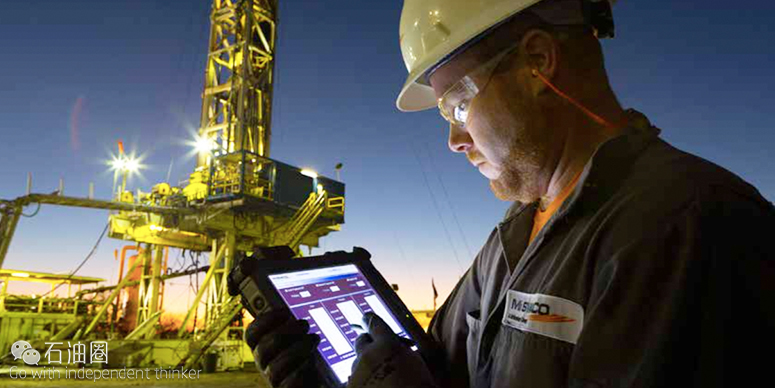Over time, production declines, operating costs increase, and cost per barrel goes up. In an effort to maintain economic production, cost-cutting measures may be instituted, or production enhancement efforts may be implemented—or both.
Most often, these methods offer only a short-term remedy to the overall trajectory of decreasing profitability. Sooner or later— and usually sooner—shutting in, divesting, or even abandoning the asset, starts to seem like the only feasible path.
The Baker Hughes DeclineShiftTM mature asset solution is designed to help you get the most out of your investments through:
The conceptualization, design, and surgical implementation of innovative production enhancement solutions that solve your technical, operational, and economic challenges
A focus on making sure that every part of the solution serves a primary purpose: to maximize capital efficiency and returns
1.Optimizing production from existing wells
Tactical selection of high-impact enhancements to accelerate production from existing well stock
Transforming underperforming and idle assets into productive wells can quickly boost your output, thereby increasing the efficiency of your well stock.
It’s often possible to optimize production by rejuvenating existing wells. In this scenario, Baker Hughes addresses the root causes behind low performance by tactically clearing and enhancing hydrocarbon pathways, boosting production volume and quality, and/or increasing flow efficiency.
You can also boost cash flow without the capital expense and time required for new wells by reactivating shut-in wells. Baker Hughes can develop a customized plan to restore well integrity, remediate formation damage, and/or enhance lift efficiency and overall production.
Every DeclineShift solution is founded on a close examination of the areas that— individually and collectively—have the greatest impact on your bottom line. This examination, which fuels the development of the most capital-efficient and high-impact solution, can range from individual well diagnostics to full-field analyses. Depending on your needs, this examination typically focuses on three primary challenges.
2. Maximazing production revenue
Proactively managing production and facilities helps reduce operating costs and accelerate hydrocarbon recovery, while maximizing production volume and quality.
Better flow from the reservoir and through the pipeline means faster and greater production revenue. Baker Hughes helps optimize flow—from reservoir to refinery—by debottlenecking production chokes throughout the system.
You can eliminate flow constraints and increase flow efficiency by using advanced chemical services, artificial lift technologies, and streamlined monitoring capabilities. And by applying water management techniques, Baker Hughes can help decontaminate returns and reduce handling costs.
Baker Hughes also focuses on minimizing downtime by thoroughly analyzing your asset to mitigate undesirable production of unwanted byproducts (such as sand and scale), ensure the integrity of your asset, prolong equipment life, and/or intelligently monitor your flow channels.
3. Increasing economically recoverable resources
Accessing additional hydrocarbons and proactively managing reservoir energy and fluid flows can improve recovery factors— increasing the total value of your asset.
Baker Hughes can help improve your reserves replacement ratio in developed fields by assessing and accessing bypassed oil. This starts by identifying and quantifying stranded hydrocarbons. Then, these additional hydrocarbons can be accessed by either tapping into new pay zones or optimizing displacement efficiency.
Extending field life is also possible by leveraging a collaborative approach that applies Baker Hughes production technologies. Using sound reservoir management practices (such as restoring and maintaining reservoir pressure), managing water and gas production, and/or monitoring and controlling reservoir performance enable you to increase total recoverable resources and maximize economic recovery.
Each solution begins with the development of an accurate profile of your well or asset. Using Baker Hughes production and reservoir characterization technologies, the root causes of decreasing performance are diagnosed. This information is leveraged to design efficient solutions—applying only the needed technologies—to maximize immediate and long-term value.
During the planning and design process, Baker Hughes experts collaborate with your team. This ensures that every critical decision leverages both your asset expertise and Baker Hughes application knowledge and portfolio of production enhancement technologies, such as: Formation evaluation,Drilling,Completions,Artificial lift,Chemical services.
This broad portfolio, backed by extensive expertise, enables Baker Hughes to architect innovative and effective solutions—based on asset potential and cost constraints—tailored to your specific needs. This approach helps you address technical challenges, as well as operational and economic challenges.
Efficient and effective field execution is the final, crucial step in the DeclineShift process. First, every element of the operational plan is documented and reviewed to ensure safe, reliable, and efficient execution. Because each solution is surgically engineered with precision, most require only a small wellsite footprint. In fact, many can be designed to address multiple challenges in a single operation, minimizing deployment time and production disruptions. This helps to accelerate payback, and grow the present value of your cash flows.
Effectively managing wellsite operations is an equally important part of solution execution. If any additional vendors are involved, Baker Hughes can coordinate with them, and even manage the project, to simplify the process and minimize the burden on your organization.
Baker Hughes also tracks results, weighing actual production and performance improvements against the projected results to ensure rapid adoption of the most successful practices—further driving capital efficiency and return on investment (ROI) on future projects.
And, because Baker Hughes is committed to your success, the company offers flexible commercial models to align with your business objectives and operational needs.
Case study
DeclineShift Solution Increased Production in Mature Field by 300%, Lowered Costs by 57%, and Reduced Decline Rates
BACKGROUND AND CHALLENGES
- Location:Latin America
- 80-year-old giant field is one of the most complex in the world
- Reservoir rock quality is highly variable
- High development costs, low recovery
BAKER HUGHES SOLUTION
- Design and implement a DeclineShift solution, developing and prioritizing the portfolio of production enhancement opportunities;
- Assume management of the field, including all technical and operational aspects;
- Leverage precise target characterization technologies; create 12,000 more streamlined well designs; and enable self-powered pads, 10,000 using well’s gas supply to improve capital efficiency;
- Drill and complete 30 wells, perform 36 recompletions and 86 workovers, and fracture 77 wells;
- Utilize remote-operations services.
RESULTS
- Increased field production by 300%;
- Reduced monthly production decline rate by 43%;
- Lowered production and field operation costs by 57%;
- Delivered 83% of wells ahead of plan.
Once the solution was implemented, production increased from 2,600 to 10,500 barrels of oil per day in the first 12 months, and operation costs* dropped from USD 4.38 per BOE to USD 1.86 per BOE over the first 18 months. An additional 20,000 barrels of incremental production were realized through strategic well completions and interventions, and the monthly field production decline dropped to 3.4%.


 石油圈
石油圈
